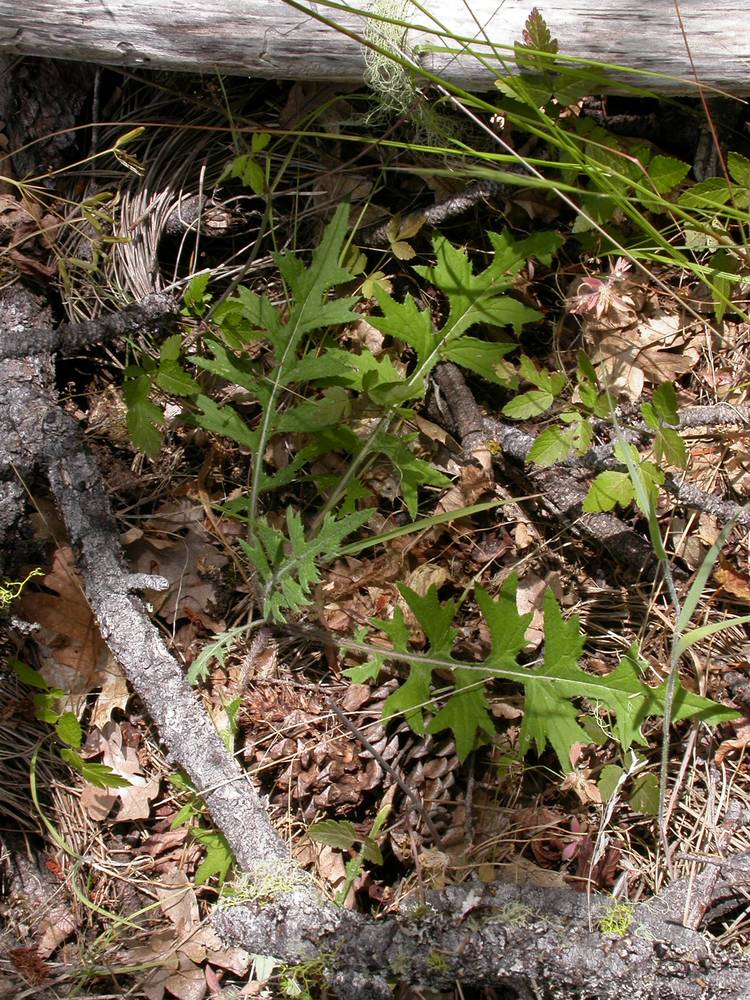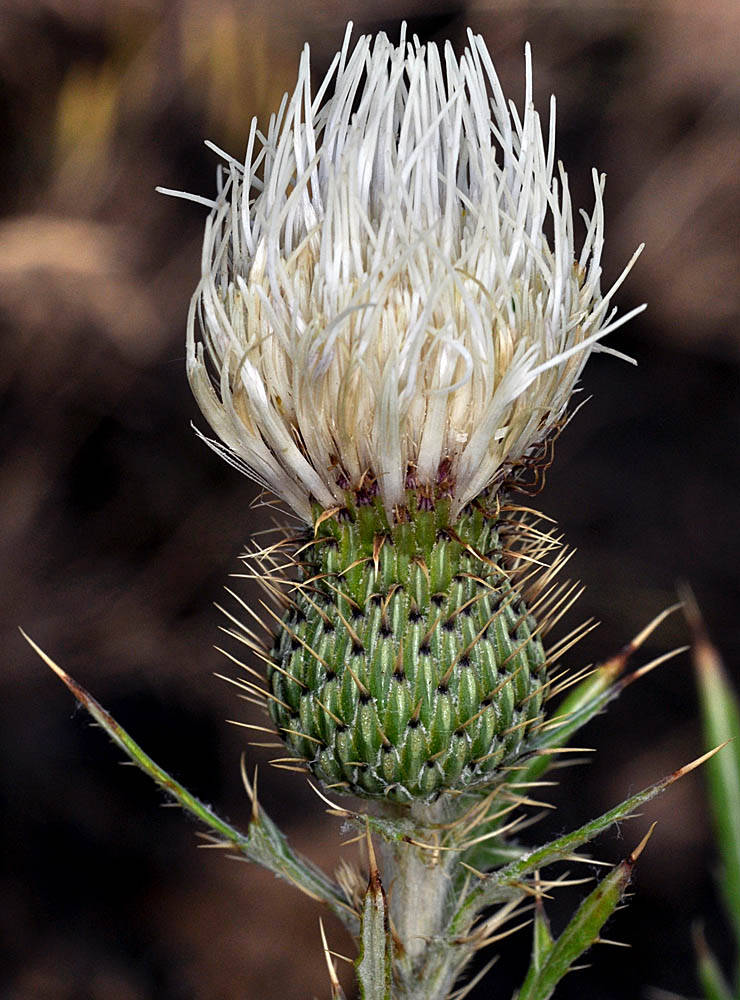Cirsium remotifolium
Cirsium brevifolium
few-leaved thistle, weak thistle
Palouse thistle
usually 1; slender, arachnoid-villous, sometimes thinly so.
1–several, gray-tomentose.
linear-oblong to elliptic, 7–35 × 1–15 cm;
margins entire to dentate or pinnately lobed;
lobes triangular-ovate to linear;
spines fine, 1–6 mm;
surfaces abaxially thinly to densely tomentose, adaxially glabrate to thinly arachnoid-villous;
basal occasionally present at flowering, sessile, clasping, or petiolate.
elliptic to oblanceolate, 12–45 × 2–10 cm;
margins entire to deeply dentate or pinnately lobed;
spines 2–6 mm;
surfaces abaxially densely white-tomentose, adaxially thinly tomentose to glabrate;
basal usually present at flowering, sessile, clasping, or petiolate.
hemispheric to campanulate, 1–2.5 × 1.5–3.5 cm, glabrous to thinly arachnoid-villous.
hemispheric to campanulate; (1.5)2–3.5 × 2–4 cm.
corollas 16–25 mm, cream-colored to purple;
tubes 6–12 mm;
throats 5–10.5 mm;
lobes 3.5–8 mm;
styles conspicuously exserted;
tips 4–6 mm.
corollas 20–28 mm, white to cream-colored, occasionally lavender-tinged;
tubes 8–13 mm;
throats 7–11 mm;
lobes 4–6 mm;
style tips 5–6 mm.
subequal to strongly imbricate, sometimes with inconspicuous glutinous ridges;
spines 1–6 mm; outer bases ? 2 mm wide.
strongly imbricate, with prominent glutinous ridges;
tips reflexed;
spines fine, 2–5 mm.
4.5–5.5 mm, tan to dark brown;
pappi 12–25 mm.
5–6 mm; straw-colored to light brown;
pappi 28–34 mm.
few–many.
1–few.
Cirsium remotifolium
Cirsium brevifolium
Western United States. 3 varieties.
Cirsium remotifolium is known to form fertile hybrids with C. edule where their ranges overlap.
Meadows, forest edges, sagebrush areas, roadsides. Flowering Jun–Aug. 200–1500 m. BW, Lava, Owy. ID, WA. Native.
Bridget Chipman
Bridget Chipman
- Local floras:
CA,
OR,
WA
- Local Web sites:
CalFlora,
CalPhotos,
Flora NW,
PNW Herbaria
WildflowerSearch
iNaturalist (observations)
USDA Plants Database
- LBJ Wildflower Center
- SEINet
- Plants of the World Online
- Encyclopedia of Life
- Wikipedia
- Google Image Search





